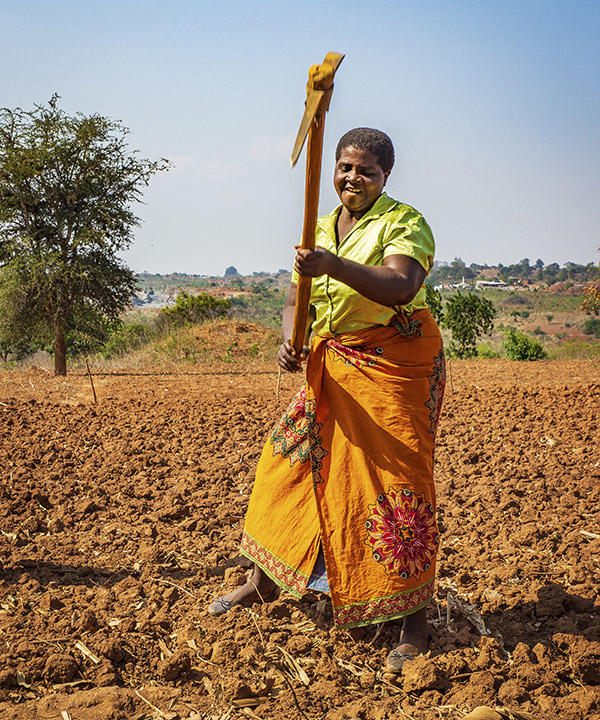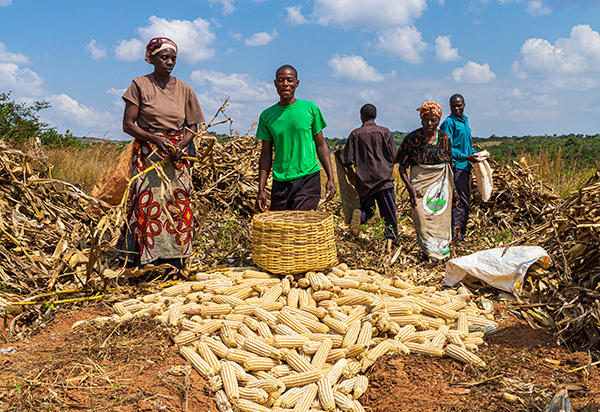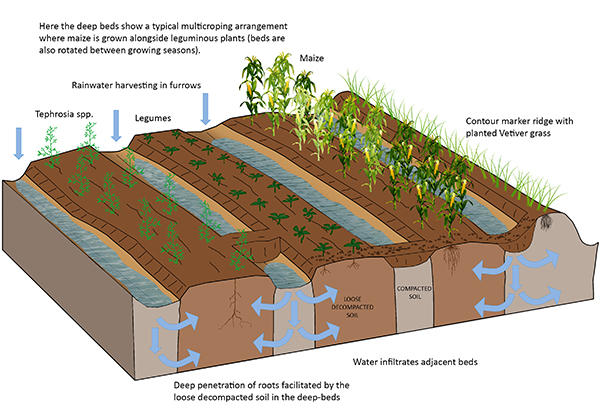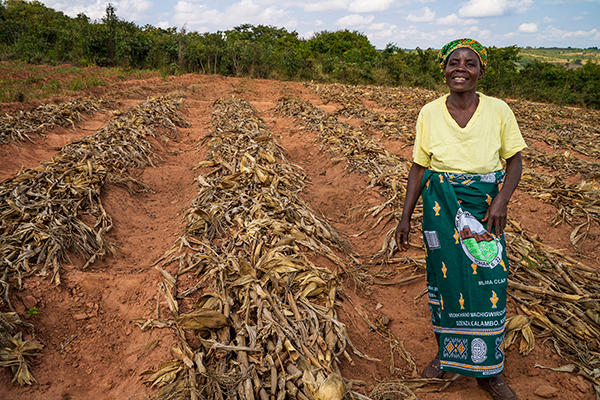December 5th is World Soil Day. Here, Geography Lecturer Dr Alan Dixon discusses the growing significance of conservation agriculture, and how recent collaborative research in Malawi is shedding light on its important contribution to sustainable development.
In recent years there has been much interest across sub-Saharan Africa in ‘conservation agriculture’, a farming technique described by the UN’s Food and Agriculture Organisation as “… an approach to managing agro-ecosystems for improved and sustained productivity, increased profits and food security, while preserving and enhancing the resource base and the environment”. In other words, conservation agriculture offers a means of achieving sustainable development; it can restore the environment while also improving the livelihoods of farmers. It does this through the integration of three key farming principles:

1) The adoption of no-tillage, which avoids mechanical soil disturbance and hence promotes a loose soil structure that enhances water infiltration, organic matter, and crop root growth;
2) Maintaining permanent organic soil cover, which means using cover crops or mulching to protect topsoil against erosion, while also creating a micro-environment that supports beneficial soil organisms;
3) Crop diversification and rotation means cultivating a range of crops at different times, which promotes nutrient recycling, diversity in soil structure, and a reduced risk of pests and disease.
The attractiveness of conservation agriculture, especially for development charities and NGOs, lies in its simplicity; it doesn’t rely on expensive machinery or handouts of fertiliser or pesticide, and in theory, once trained, farmers can benefit and become self-reliant. This is especially important in countries like Malawi, where approximately 70% of the population live below the poverty line and 11 million people are dependent on subsistence agriculture for their survival. Here, the already fragile and vulnerable agricultural landscape is threatened by climate change, and many areas have experienced severe land degradation characterised by declining soil fertility and soil erosion (up to 39 tonnes per hectare per year).

Here at the University of Worcester we have been working with an NGO, Tiyeni Malawi, to examine how conservation agriculture practices can make a difference to the lives of subsistence farmers. Tiyeni, which in the Chichewa language means ‘let’s go’, has developed a specific type of conservation agriculture called ‘deep-bed farming’ (DBF) which since its introduction in 2005 has spread to over 20,000 farming households across the country.
DBF incorporates many of the principles of conservation agriculture, but its key innovation is the manual break-up and tillage of compacted soil prior to cultivation. Unlike mainstream conservation agriculture that prohibits tillage, DBF tillage is also actively encouraged every five years in order to maintain the loose soil structure. DBF also includes the construction of raised agricultural beds that are bordered by ditches that collect and store water. These beds are constructed in terraces that follow the contour of the land, and each ditch is closed at the end of each farming plot to prevent soil and water loss. As well as training farmers in these land management techniques, Tiyeni also teaches farmers how to make organic manure from readily available animal and crop waste. The simplicity and accessibility of DBF seems to have been a major factor influencing its adoption among farmers, but does DBF actually produce win-win outcomes for people and the environment?

The short answer is ‘yes’. Our recent research suggests that those farmers who adopt DBF experience a doubling and sometimes tripling of maize yields compared to those who practice conventional farming techniques. Not only does this improve food security, but it also means farmers can generate an income from the sale of surplus crops, and this money is often used for children’s school fees or equipment such as bicycles or mobile phones.
Environmentally, our research also suggests that DBF has significant benefits over conventional farming; it reduces soil erosion by 50%, stores more moisture, and enhances soil nutrient availability. Unsurprisingly, underpinning all these benefits was the the 5-year soil tillage regime.

To till or not to till then? Academic debate continues within conservation agriculture circles about the advantages and disadvantages of each, and indeed whether ‘deviant’ practices like Tiyeni’s DBF can truly be considered conservation agriculture. While some would suggest the importance of maintaining and upholding an agreed set of conservation agriculture principles that can be applied consistently around the world, others might argue the need to move beyond a prescriptive one-size-fits-all approach – and instead consider how broad principles can be interpreted, tested and adapted to each unique farming environment. For subsistence farmers in Malawi, what really matters of course, is what works, and what helps them achieve food security and resilience to climate change. And Tiyeni’s DBF does just that.
Find out more information on conservation agriculture by visiting Tiyeni’s deep-bed farming. Read more about the University of Worcester’s research in this area.
Find out more about the School of Science and the Environment at Worcester